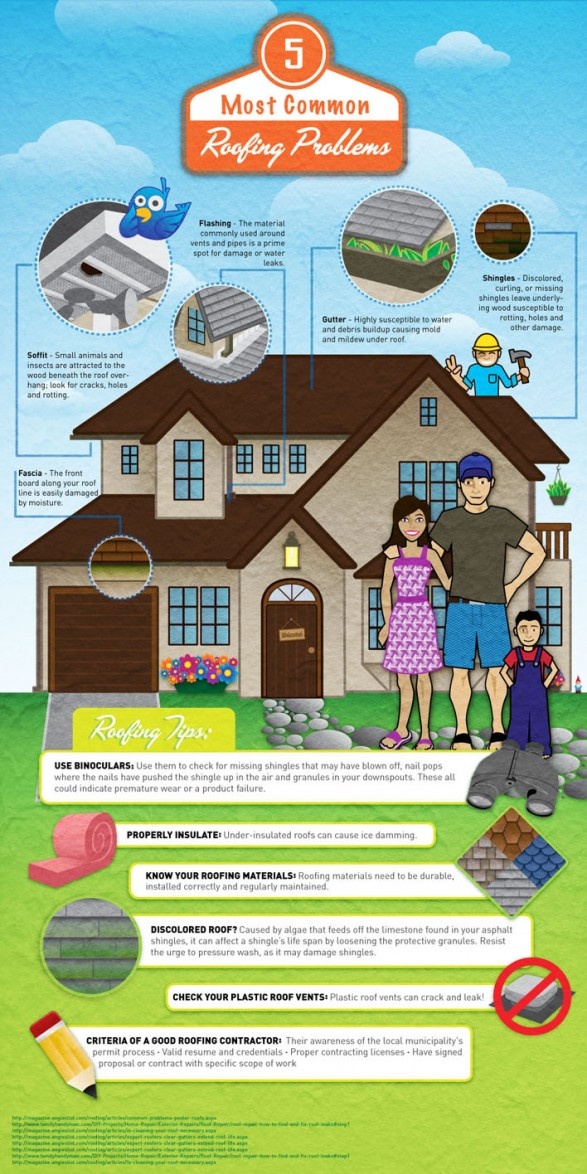Identifying Roofing Damage Early To Avoid Major Issues
Identifying Roofing Damage Early To Avoid Major Issues
Blog Article
Material Created By-Durham Dobson
To safeguard your home from prospective expensive repair work, recognizing roofing system damage early is vital. By keeping an eye out for refined signs like missing roof shingles or water stains, you can capture concerns before they aggravate. However what concerning those frequently forgotten locations that could hint at hidden problems hiding above you? Stay tuned to uncover key tips for identifying roof covering damage before it intensifies into a major migraine.
Early Indication
Detecting roofing system damage early can conserve you time and money. One key early indication to keep an eye out for is missing out on or damaged shingles. If you see any type of tiles that are fractured, curling, or completely missing out on, it's essential to attend to the problem without delay. These harmed shingles can leave your roof covering susceptible to leaks and more damage.
One more indicator to look for is water discolorations on your ceiling or wall surfaces. These stains can indicate a leak in your roof that requires instant attention. Ignoring these water discolorations can lead to more extensive and pricey fixings down the line.
In addition, be on the lookout for any type of indications of drooping or drooping locations on your roofing system, as this can suggest structural damage that needs to be fixed immediately.
Exterior Evaluation Tips
Frequently inspecting the outside of your roof covering is crucial for maintaining its stability and identifying prospective damage early. Start by checking out the tiles-- try to find any type of missing out on, split, or crinkling roof shingles, as these can be indications of roofing damages.
Check the seamless gutters for granules from the roof shingles, as too much granule loss might represent aging or weathering. Take you could look here of the flashing around vents, chimneys, and skylights, guaranteeing they're tightly secured and free of fractures.
Seek signs of moss, algae, or mold development, as these can bring about roof deterioration if not attended to immediately. Furthermore, check the fascia and soffits for any water discolorations or rot, which can indicate water damage.
Finally, analyze https://www.news4jax.com/news/2018/12/20/complaints-about-roofer-highlight-loophole-in-florida-insurance-law/ of your roof covering from the ground, searching for any type of drooping locations or recognizable dips. By conducting these exterior inspections routinely, you can capture roof damages early and avoid it from turning into a major problem.
Inside Red Flags
When evaluating your roof for potential damages, do not overlook the significance of checking the interior of your home. Interior warnings can often be early indicators of roof covering issues that require interest.
Beginning by examining your ceilings for any water stains or staining, as these can signal a leak in the roof covering. An additional essential area to inspect is the attic room, where indications of water damages, mold and mildew, or mildew may show a roof covering problem.
hardwood floor installation san antonio to any mildewy smells or an obvious increase in humidity degrees, as these can likewise be signs of water invasion from a damaged roof. In https://claytonojdxr.blogvivi.com/33021098/uncover-the-essential-distinctions-in-between-steel-and-shingle-roofing-to-figure-out-which-option-best-matches-your-requirements-and-budget-plan , sagging areas in the ceiling or wall surfaces ought to be taken seriously, as they could be an outcome of water damages compromising the structure.
If you notice any of these interior warnings, it's vital to have an expert roofer evaluate the scenario quickly to stop more damage and costly fixings.
Final thought
By remaining watchful and frequently checking for early warning signs of roofing system damage, you can stop small issues from developing into significant troubles. Keep an eye out for missing or harmed shingles, water spots on ceilings or wall surfaces, and any type of drooping or sagging areas on the roofing system. By dealing with these concerns promptly, you can conserve yourself from expensive repair services and ensure your roof continues to be in good condition for many years ahead. Remain aggressive and safeguard your home from prospective damage.
